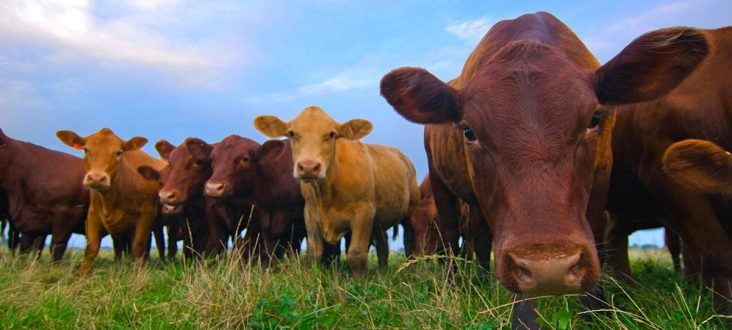State’s drought conditions impacting cattle producers
by November 7, 2024 8:52 am 232 views

Despite recent rains, many parts of Arkansas remain in some form of drought, according to the U.S. Drought Monitor. The prolonged dry and warm autumn weather will have a significant impact on cattle producers’ hay feeding their stock.
Kenny Simon, extension forage educator for the University of Arkansas Division of Agriculture, said the extended drought has both impacted the growth of fescue, the state’s most common cool-season perennial grass, and delayed the planting of warm-season perennial grasses.
“Everyone’s scared to plant because of how dry it is,” Simon said. “As a result of that delayed planting, we’re going to have a delayed growing period.”
Bermudagrass is normally planted between mid-September and mid-November, but many producers won’t be able to plant until November at the earliest, he said. This likely means the grass won’t be available for grazing until later than normal in spring.
The state’s fescue pastures are growing unusually sparse in many fields across the state.
“A lot of our pastures are getting grazed down really short right now,” Simon said. “What growth remains is getting grazed really close to the ground, which opens up the canopy for undesirable broadleaf weeds and other grasses. It’s weakening the root systems of those perennial grasses.”
Nearly all the state has been in some stage of drought for the last month, except for a few counties in Northeast Arkansas. The most severe conditions – extreme drought – are in counties in Northwest Arkansas and in some counties along the Oklahoma border, the Monitor reported.
Rain is projected to fall around the state on Friday (Nov. 8), according to the National Weather Service. But, warm and sunny weather is expected towards the end of the weekend and most of next week.
Sparse forage and elevated feed prices can often lead producers to decide it’s better to sell off a cow than overwinter it, but cattle producers in Arkansas and surrounding states have already exercised that option for much of the past five years.
James Mitchell, extension livestock economist for the Division of Agriculture, said that much of the U.S. cattle industry has been in a “liquidation phase,” with producers culling herds for much of the last five years.
“We’re coming off a couple of years of some pretty hard liquidation,” Mitchell said. “Our herd sizes are already pretty moderated, so I don’t see culling decisions being accelerated, just because we don’t have a lot of cows to start with.”
Fortunately, many Arkansas producers were able to get two cuttings of hay earlier in the year and have stockpiled enough to get through at least a normal year, he said. And while 2024 isn’t shaping up to be a normal year in this instance, it’s better than nothing.
“The drought hit late enough in the season that most producers had adequate hay on hand by the time things got bad,” Simon said. “I think most folks got the hay they need for a normal year, but these fall droughts may force people to start feeding three to four weeks early. When you compound that with planting annuals later than normal, we’re going to end up feeding hay a lot longer than most people anticipated.”
Simon recommended that growers try to make any remaining forage last by using moveable electric fence to “strip graze,” the process of confining a herd to a specific area for a set period of time before allowing them access to other grazing areas.
“Give the cows a limited supply of forage, maybe two to three days, or maybe even move them just once a week,” Simon said. “What we’re trying to do with strip grazing is improve the use of the forage and get it passed through to the animal.”
“Once you start feeding hay, confine those animals to one pasture,” he said. “Maybe it’s a field that’s low in soil fertility and we improve it with the cows’ waste as fertilizer. By rotating the cows onto a different field every two to three weeks, we can spread the fertilization out over a broader area, instead of concentrating it in one field.”
